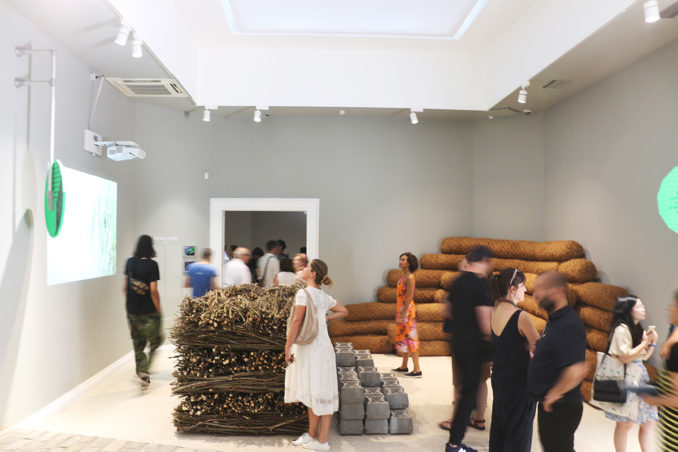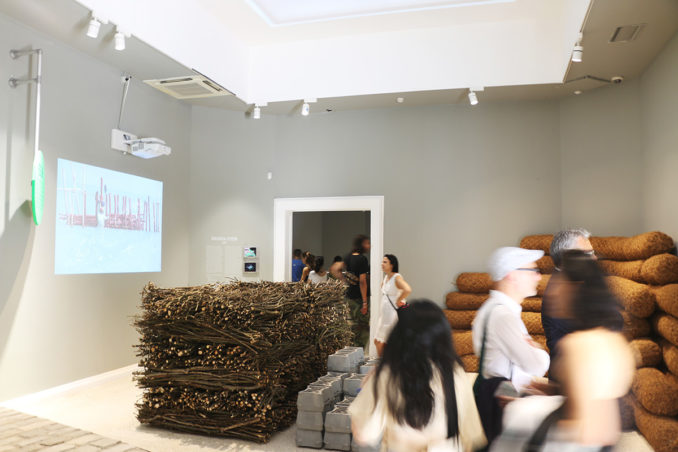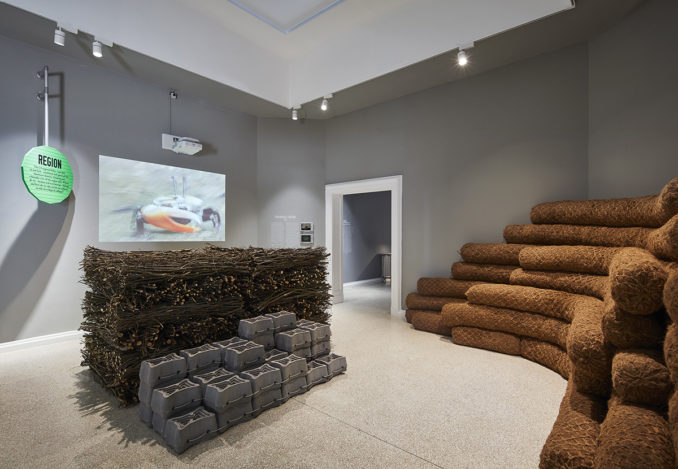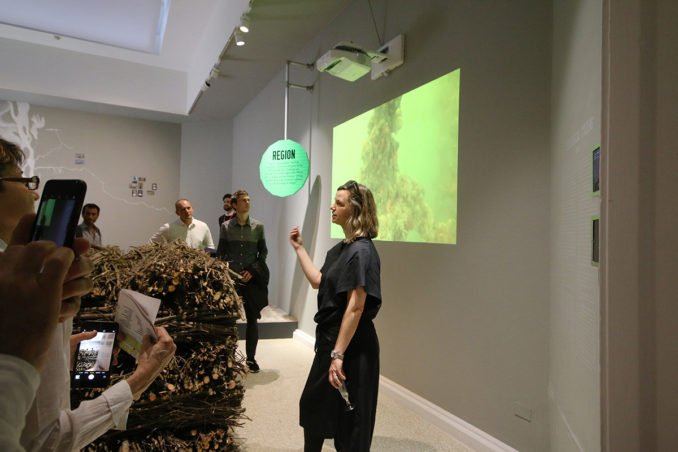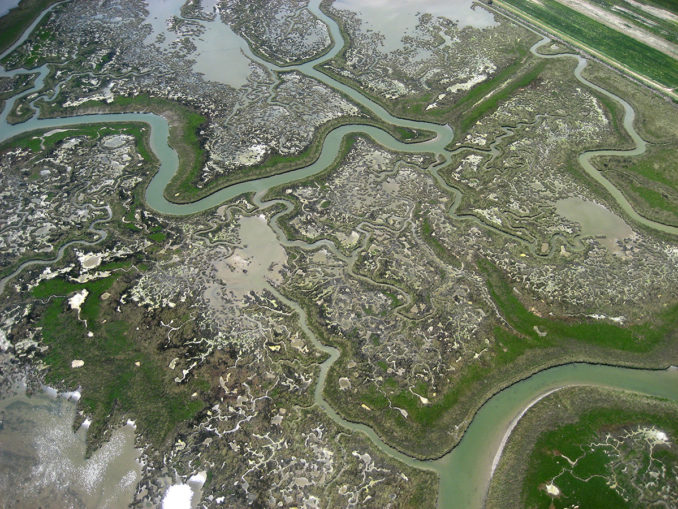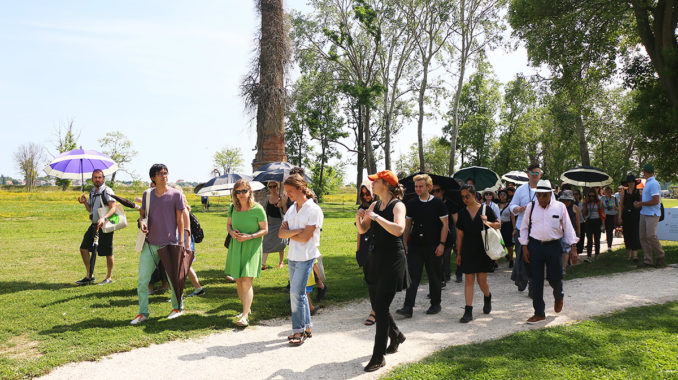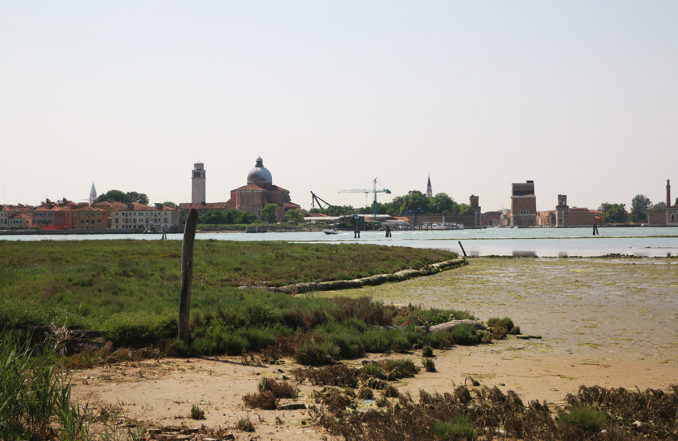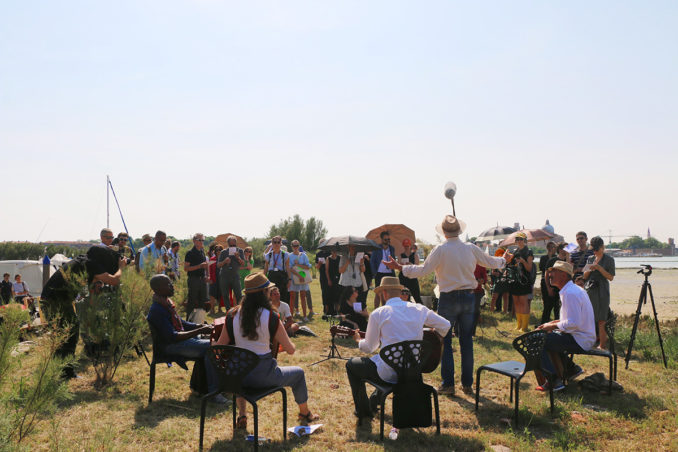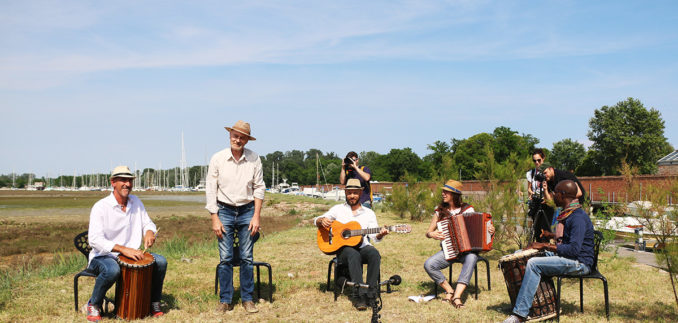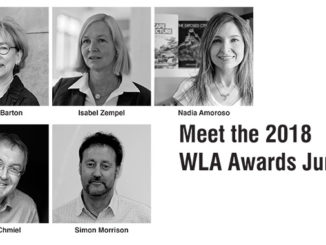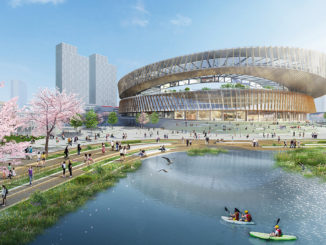SCAPE, one of seven teams participating in the US Pavilion at the 16th International Architecture Exhibition, presents Ecological Citizens. The US Pavilion, commissioned by the School of the Art Institute of Chicago and The University of Chicago, asks participants to embody the theme of Dimensions of Citizenship, and consider how citizenship is constructed and contested in the built environment across seven different scales. Within the scale of the region, SCAPE demonstrates that landscape architecture can be a critical tool for re-envisioning the response of citizens to climate change.
SCAPE’s commitment to synthesizing environmental, urban, and social issues and reconceiving urban landscape design as a form of activism has framed its approach to projects since it was founded in 2005. SCAPE believes that landscape architects and urban designers should contribute their skills to shared, positive, purposeful civic-scale interventions that interweave science, policy, and art. Projects like Living Breakwaters embody this approach, advocating for broader regional ecological health through the implementation of project-scale collaborative design interventions.
Ecological Citizens–just as SCAPE’s other works–posits a new definition of urban ecology as a mode of transformation where an infrastructural system is overlaid on and connected with a unit of engaged citizenry. The term “Urban Ecology” as framed in SCAPE’s “manufestograph” Toward an Urban Ecology (Monacelli Press, 2016) describes a permanent relationship of designed life support on the engineered globe. From art installation to re-deployment in the Venice Lagoon, the materials featured in the exhibition will serve as an emblem of localized eco-citizenry.
Under the leadership of 2017 MacArthur Fellow and principal of SCAPE Kate Orff, Ecological Citizens demonstrates that landscape architecture can be a critical tool for re-envisioning the response of citizens to climate change. The exhibition gives agency to citizens (human and non-human alike) of the region—an area that does not have fixed political boundaries, but rather assemblages of ecosystems, interspecies entanglements, infrastructural imperatives, and climatic forces.
We are excited for this installation to shine a spotlight on vanishing intertidal landscapes worldwide and to provoke a dialogue on new conceptions of the region. We’re also looking forward to redeploying the exhibition pieces in needed sites within the Venice lagoon, where they can play a small part in re-making this endangered landscape.
-Kate Orff, Founder and Principal, SCAPE
Taking the Venetian Lagoon as a globally significant case study of a tidal region under ecological threat, the exhibition features intertidal architectures such as sediment fences and biodegradable coir logs that fight erosion, as well as video content about their use by regional citizens.
Two events will bookend SCAPE’s presence at the Biennale: as part of the opening weekend of the Biennale on May 26th, Kate will lead a walking tour of La Certosa Island with scientists and activists who will discuss what it means to be an ecological citizen in the face of climate change. The island’s salt marsh ecology is one of the vanishing landscapes highlighted in Ecological Citizens. At the conclusion of the Biennale in November, SCAPE will re-deploy the ecological architecture materials from the exhibition–in two sites in the Venetian lagoon–with the goal of providing long-term restoration and creating a physical space in which local citizen activism can take place.
With Ecological Citizens, SCAPE rethinks the aesthetic architectural forms classically presented at the Biennale with “ugly” ecosystem architecture that will ultimately serve to serve to help re-generate biodiverse marshlands in the larger landscape outside the Pavilion’s doors.
SCAPE Project Team |
Kate Orff, Nans Voron, Gena Wirth, Nabi Agzamov, Tara Mohtadi
Key Advisory Team |
Dr. Laura Airoldi (Marine science), Dr. Shimrit Perol-Finkel and Dr. Ido Sella (Marine ecology and structures), Dr. Andrea Barbanti (CNR-ISMAR), Alberto Sonino (La Certosa), Prof. Allan Holzman (Video/Film), Alberto Baurasse (LASA Research Group, University of Padova)
Commissioned by |
The School of the Art Institute of Chicago and The University of Chicago for the US Pavilion’s Dimensions of Citizenship
On view |
The Pavilion of the United States, Giardini della Biennale
26 May to 25 November 2018, 10am – 6pm

